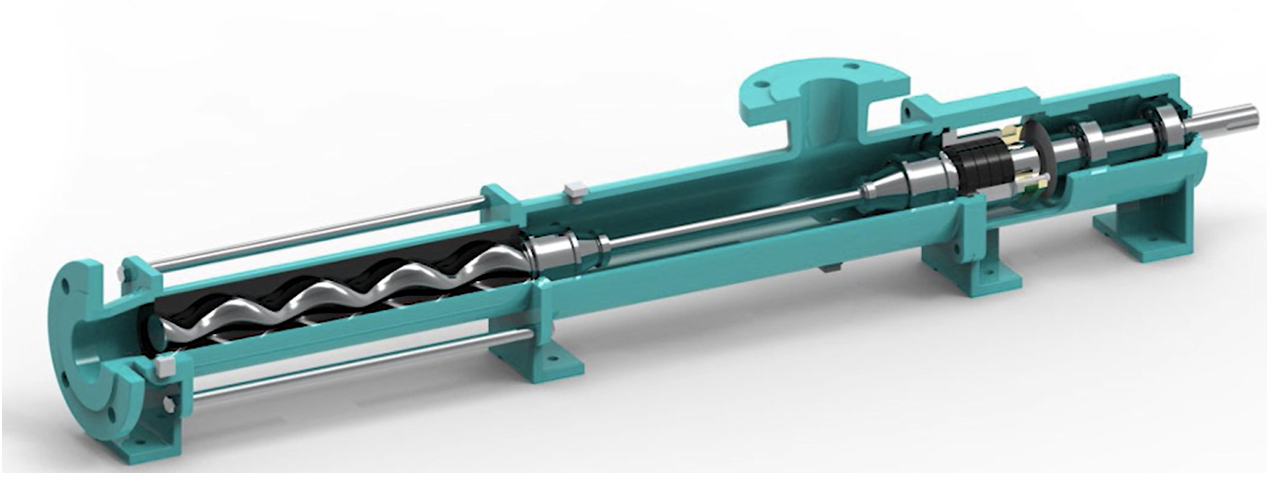
The progressive cavity pump is a rotary positive displacement pump with a single screw. It is unique in that the screw (rotor) “progresses” the fluid through the pump as it rotates and meshes with an elastomeric stationary piece (stator). It is a good choice for many challenging fluids, since it can effectively pump a varying range of fluid viscosities, handle abrasives in the fluid and handle fluids with high entrained gas fractions. In essence, they can pump almost any fluid that is compatible with their materials of construction.
The pump works by rotating a single threaded rotor inside of a double threaded stator (Image 1). The stator is usually made of an elastomeric material, although pumps do exist with rigid stators that include a clearance between the stator and rotor. This unique design can handle flow rates up to 3,750 gallons per minute (gpm) and up to 1,000 pounds per square inch (psi) while handling diverse and challenging fluids.

For more information on progressing cavity pumps, refer to HI standard, Rotary Pumps for Nomenclature, Definitions, Application, and Operation (ANSI/HI 3.1-3.5) at pumps.org.


